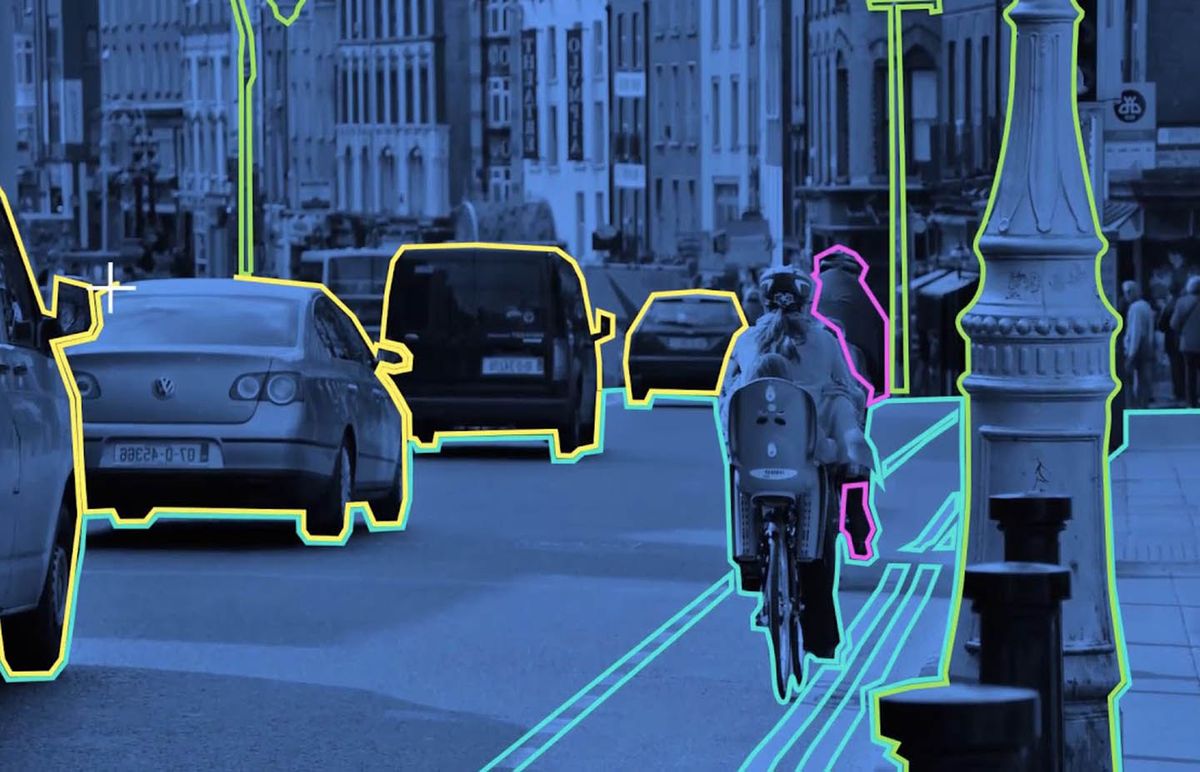Defining Image Annotation and How it Works

Image annotation is the tagging, labeling, or identifying image sections to train an AI system. AI won’t know how to identify or recognize important data presented to it without image annotation. Image annotation is essential for AI machine learning to occur. This also makes it essential to the future of all our technology.
Though image annotation as a concept is relatively simple, it can get complex depending on the project you’re working on. For example, there are many different types of image annotation to familiarize yourself with. Some of these types include:
- Bounding box image annotation
- Cuboid image annotation
- Skeletal image annotation
- Key points image annotation
- Lane image annotation
You’ll have to learn all of these to become skilled at AI image annotation as a whole. There are also several use cases for image annotation since it is already used in several global industries. Some of these use industries include:
- Healthcare
- Transportation
- Agriculture
- Security
Modern society wouldn’t be nearly as safe or advanced as it is without image annotation machine learning. Below, we’ll talk about these image annotation types and use cases in more detail.
Image Annotation Tools and Methods: Specific Types
Bounding Box Annotation
The most common type of image annotation is bounding box image annotation. This type of AI image annotation lets you place boxes around important data in your image. Though it doesn’t capture lots of detail, it is a simple and quick way to annotate important data on short notice. You can also use it to identify important details before revising with more specific machine learning image annotation.

Cuboid Annotation
Cuboid annotation is like a more advanced bounding box annotation. However, cuboid image annotation will place a cube around the object instead of placing a simple box around important data. This specifies that an object is 3D rather than 2D, which can be important for image annotation object recognition.

Skeletal Image Annotation
Skeletal image annotation can identify living things by their skeletal structure. This can include both humans and non-human animals. Skeletal annotation is often important for security systems to identify potential intruders.

Key Points Image Annotation
If you’ve ever unlocked your smartphone using a face ID scanner, you’ve seen key points annotation in action. Key points annotation identifies the facial structure of individuals by capturing data on their eyes, nose, lips, and cheekbones. This type of image annotation technique is often used together with skeletal annotation in high-end security systems.

Lane Image Annotation
Lane annotation is primarily used in transportation and agriculture. Simply put, lane image annotation identifies straight lanes in an image. This can mean lanes at an intersection or lanes in a field of crops. This helps AI identify potential roadblocks and develop solutions to these issues.

Most Common Image Annotation Use Cases
Healthcare
Image annotation is heavily used within healthcare. One example can be seen in records. Medical image annotation can be used to identify specific data in a patient’s medical records, including their name, birthday, or health condition. Using image annotation is a simple and efficient way to locate essential records in a hospital database without taking too much time.
The healthcare industry is also starting to use image annotation to assess and diagnose patients. For example, artificial intelligence image annotation can analyze medical scans such as X-rays or CT scans and identify potential issues. Advanced systems can then provide a suggested treatment plan, which a qualified physician can then review. Some systems are so advanced that they can even treat patients using an AI-trained robot to perform minor surgeries.
Transportation
The transportation industry also frequently uses image annotation services. Artificial intelligence uses image annotation to identify potential issues at specific traffic intersections.
These machines can then provide solutions by adjusting traffic light timing or reporting that alternative solutions are required. Beyond traffic stops, image annotation is also used to develop automated vehicles. Self-driving cars will need to use image annotation to avoid roadblocks and prevent accidents by recognizing objects in their way.
Security
If you’ve ever owned a security camera, you’ve had image annotation at your home or business. Image annotation is heavily used in the security industry to keep people and places safe. Often, these systems will use skeletal annotation and key points annotation techniques to recognize threats. This data can then be turned over to law enforcement for a full investigation and identification of the intruder.
Conclusion
Machine learning image annotation can sound scary, but it doesn’t have to be. Once you learn the basics, it becomes relatively simple with the right image annotation platform by your side.
Comments ()